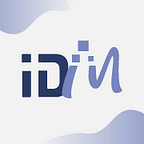The origins of a shared resource environment such as cloud computing date back to the 1960’s. In a 1961 speech to MIT students, John McCarthy, a renowned computer scientist that won the Turing award for his work in Artificial Intelligence, famously said, “computation may someday be organized as a public utility.” In other words, with the concept of cloud computing that is certainly what you have — a shared resource of computing power. While the idea has been around for some time, the web-based technology required to support SaaS matured heading into the late 1990’s. That’s when companies like Salesforce began offering traditional enterprise solutions, such as customer relationship management, through a SaaS model.
At first, the enterprise software world didn’t take SaaS seriously. In the last five years, however, that’s changed dramatically as SaaS companies have proven they’re able to grow their revenue and customer base through a subscription licensing model. At the same time, buyers are increasingly drawn to the affordability and the familiarity of the web browser-like user interface (UI) SaaS solutions offer.
What it SaaS is
SaaS (Software as a Service) is a sort of service in which applications are facilitated in a centralized cloud and client can utilize this facilitated application utilizing web program over the Internet. It can, likewise, be considered as a service where end clients can get to software application by utilizing their web empowered devices.
You don’t need to make a bother over installing and keeping up software rather you can without much of a stretch use it through the Internet. So it disposes of you from keeping up hardware administration and complex software. This sort of services is facilitated on cloud and Google, Twitter, Facebook, and so on are the average cases which utilize SaaS.
SaaS allows data to be accessed from any device with an Internet connection and web browser. In this web-based model, software vendors host and maintain the servers, databases and code that constitute an application. This is a significant departure from the on-premise software delivery model. First, companies don’t have to invest in extensive hardware to host the software, and this in turn, allows buyers to outsource most of the IT responsibilities typically required to troubleshoot and maintain the software. The SaaS vendor takes care of it all.
In addition to allowing remote access via the web to the software applications and data, SaaS also differs from on-premise software in its pricing model. On-premise software is typically purchased through a perpetual license, which means buyers own a license to the software. They also pay 15% to 20% per year in maintenance and support fees. SaaS, on the other hand, allows buyers to pay an annual or monthly subscription fee, which typically includes the software license, support and most other fees. A major benefit of SaaS is being able to spread out costs over time.
How SaaS Works
SaaS applications are otherwise called hosted software, on-request software or electronic software. In how to learn SaaS, software merchant has and keeps up the server and takes think about security, accessibility, and execution. This is an important change from the on-start software conveyance demonstrate. SaaS customers can free themselves from purchasing software and hardware. You can plan your meetings, record meetings, utilize comments, talk live and do numerous more things utilizing the service.
How safe is data
This is one of the biggest sticking points for companies that are considering SaaS. Security is an important consideration when allowing someone else to maintain your business-critical data, especially for companies with large data sets. However, with online banking and online payroll systems becoming the norm today, the security issue seems to be a bit of a red herring. Few things are more important than our bank accounts, yet most of us are comfortable with putting this information in the cloud.
In truth, data security is independent of whether the server is sitting right next to you or in a different city. Apples to apples, SaaS vendors are actually able to invest much more in security, backups and maintenance than any small to medium enterprise. For this reason, a web-based system typically has more security measures in place than an on-premise system. Furthermore, most SaaS vendors undergo stringent security procedures of SAS70 Type II audits that test the data center’s level of security. And chances are an individual IT department within may not hold themselves to the same standards.
A business has no idea how their SaaS service provider will secure their data and what backup procedures that their service provider will have in place. The only thing that a business can go by, is the word of their service provider confirming that they will ensure that their clients data will be well looked after. To ensure that their data is well looked after, a business must ensure that their service provider writes down exactly how their clients data will be secured, in their Service Level Agreement contract.
References
https://www.eztalks.com/video-conference/how-does-saas-work.html
https://www.softwareadvice.com/resources/saas-10-faqs-software-service/
